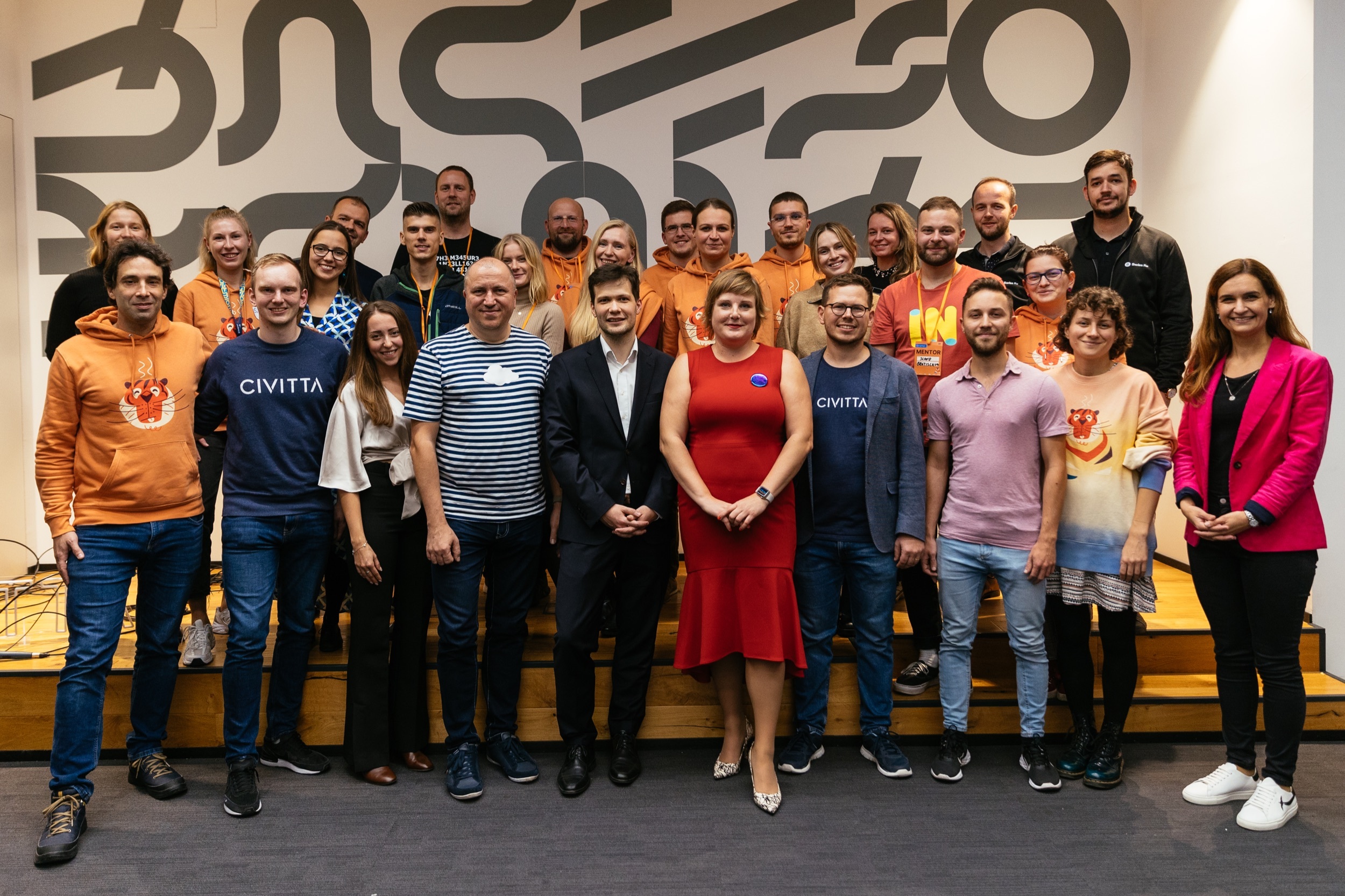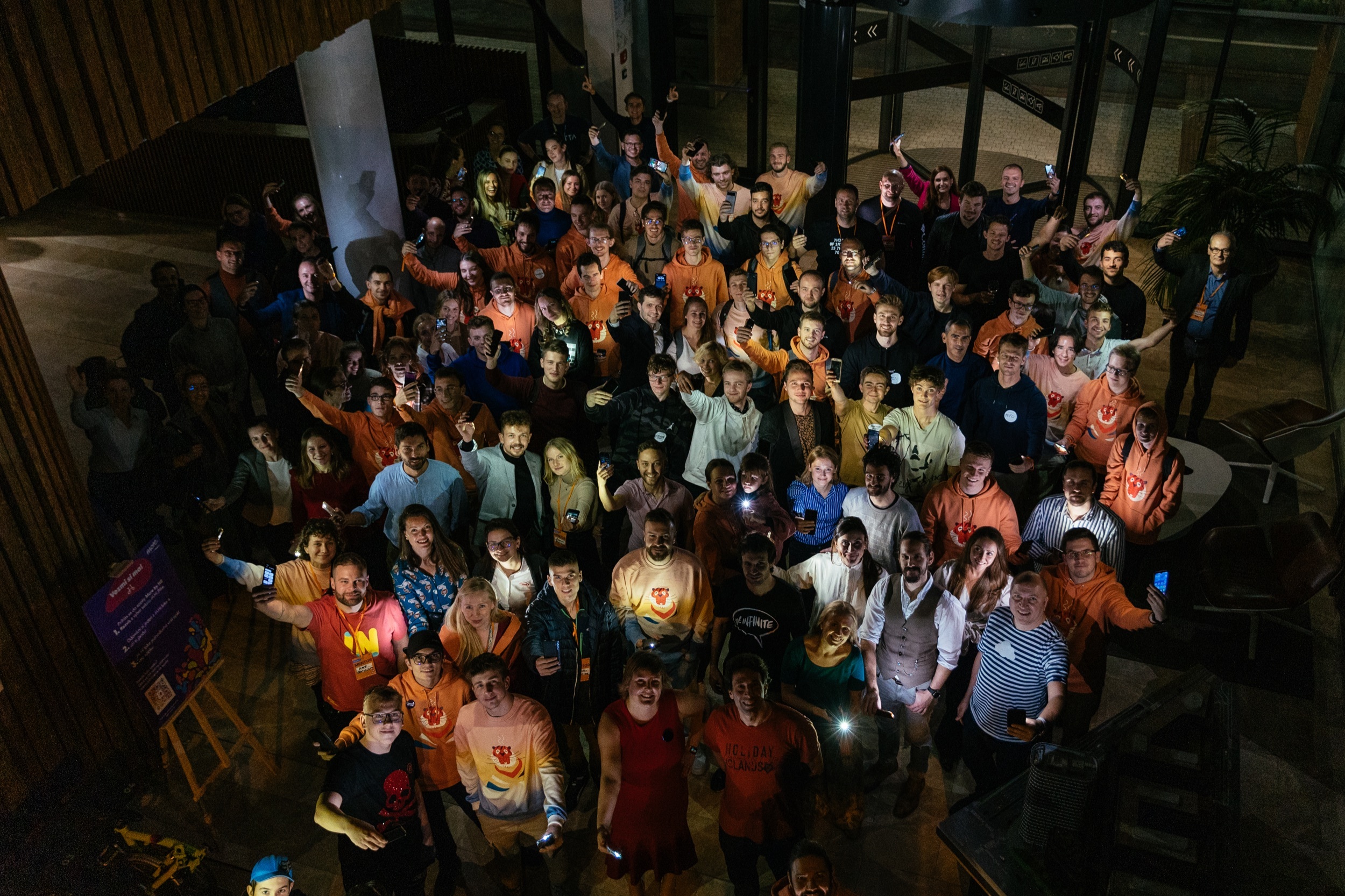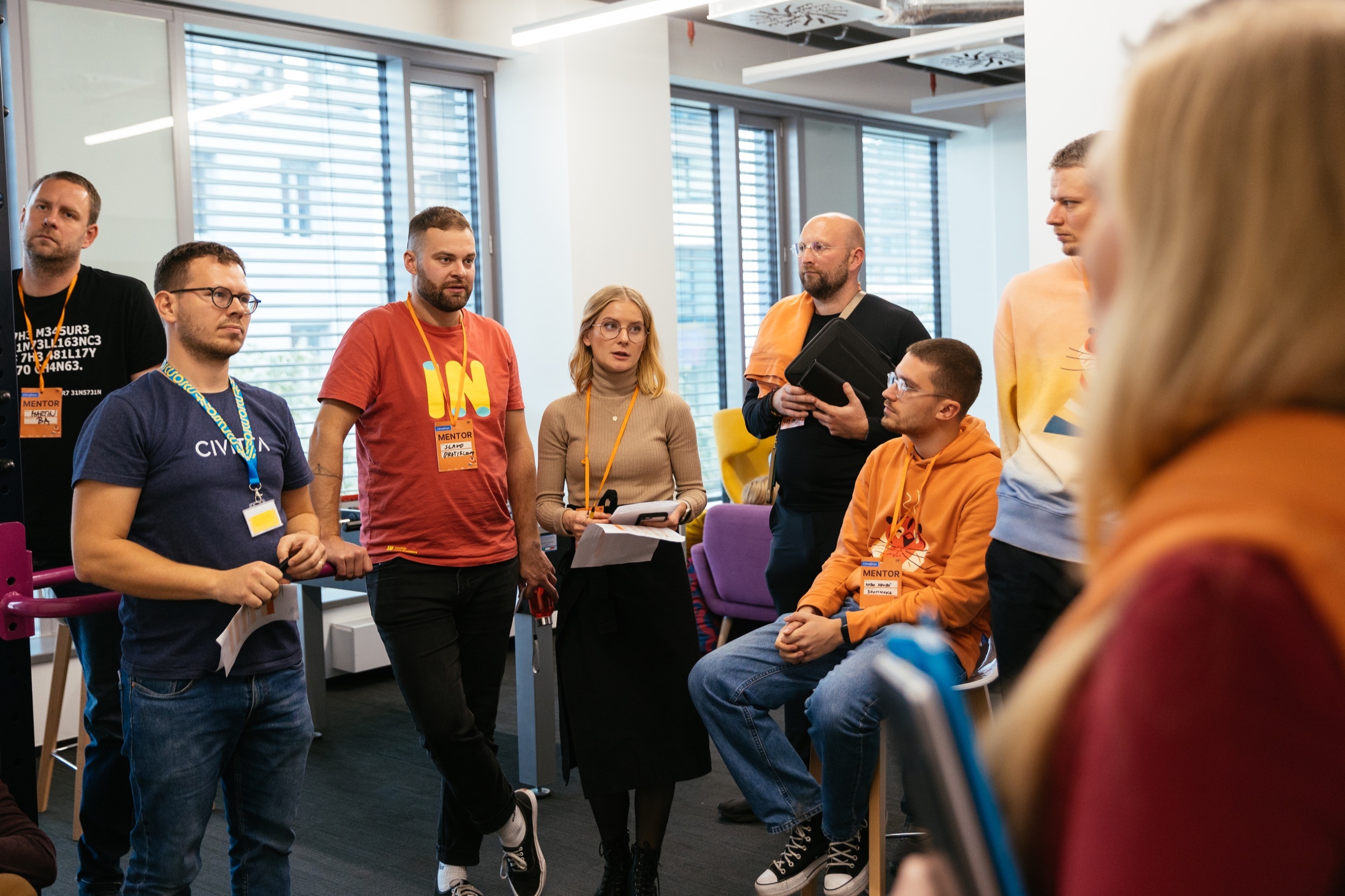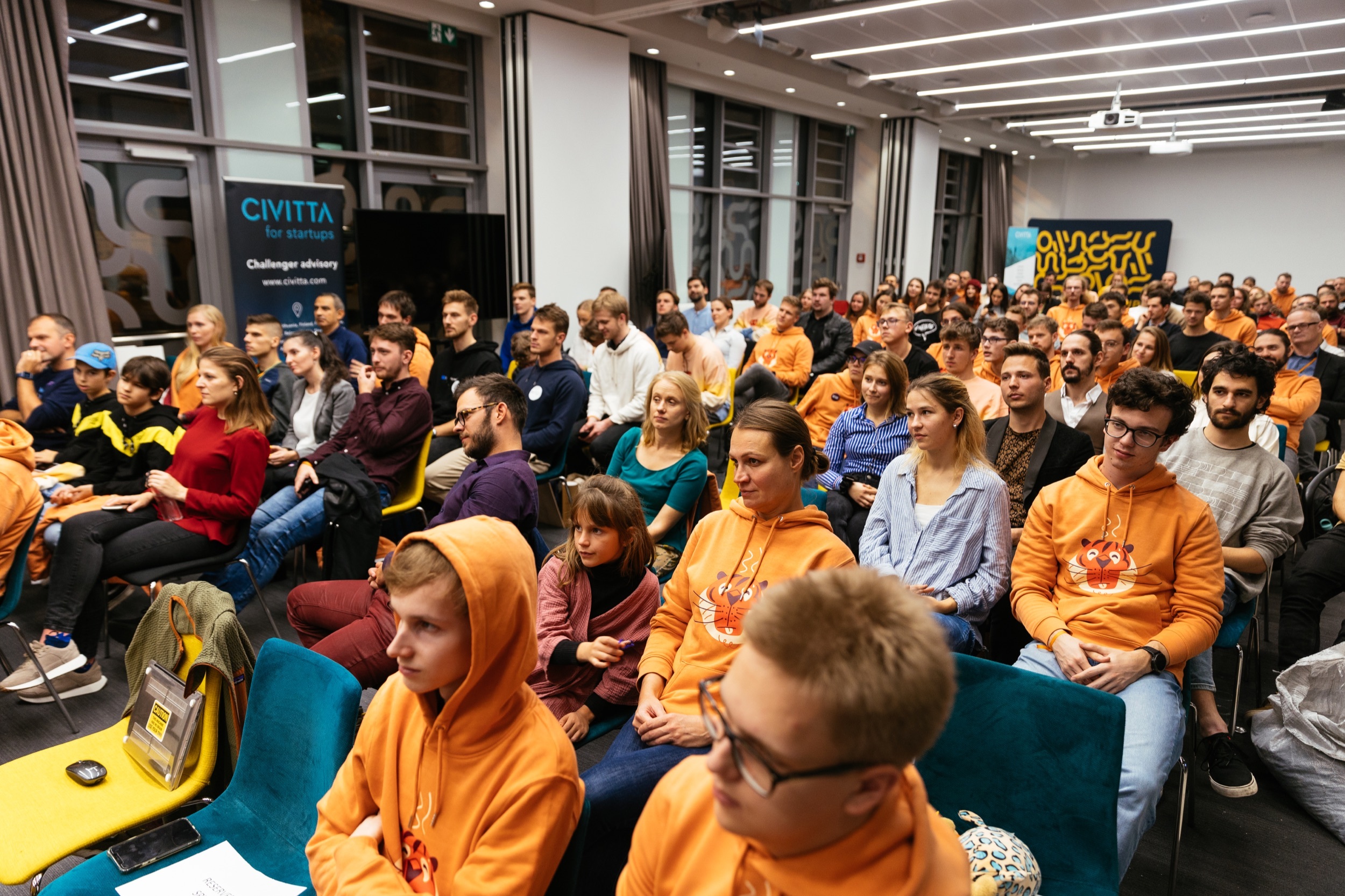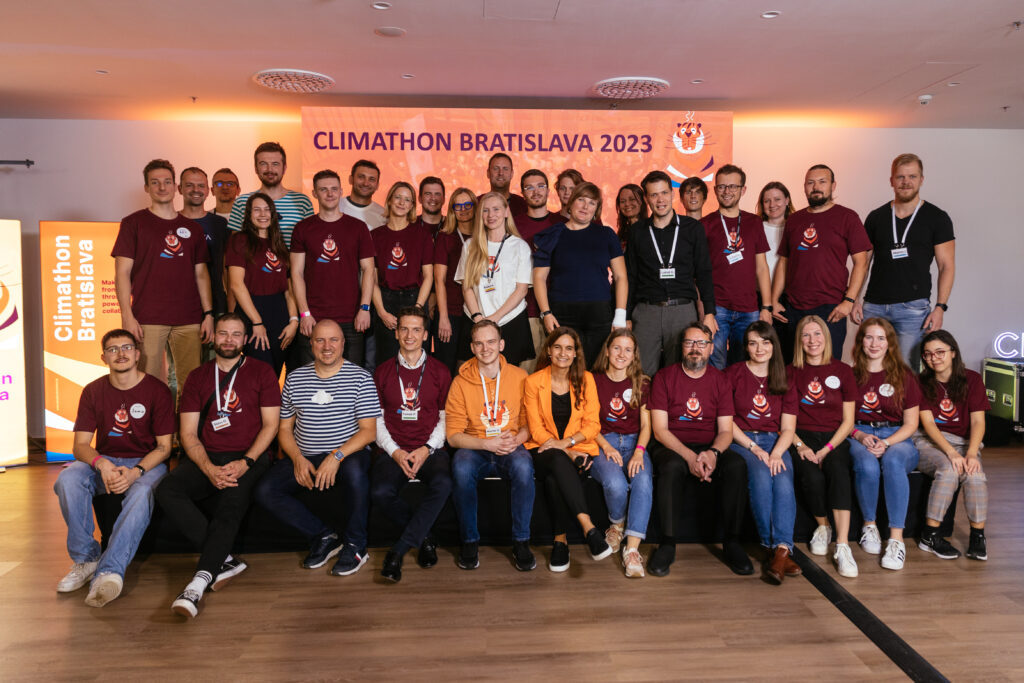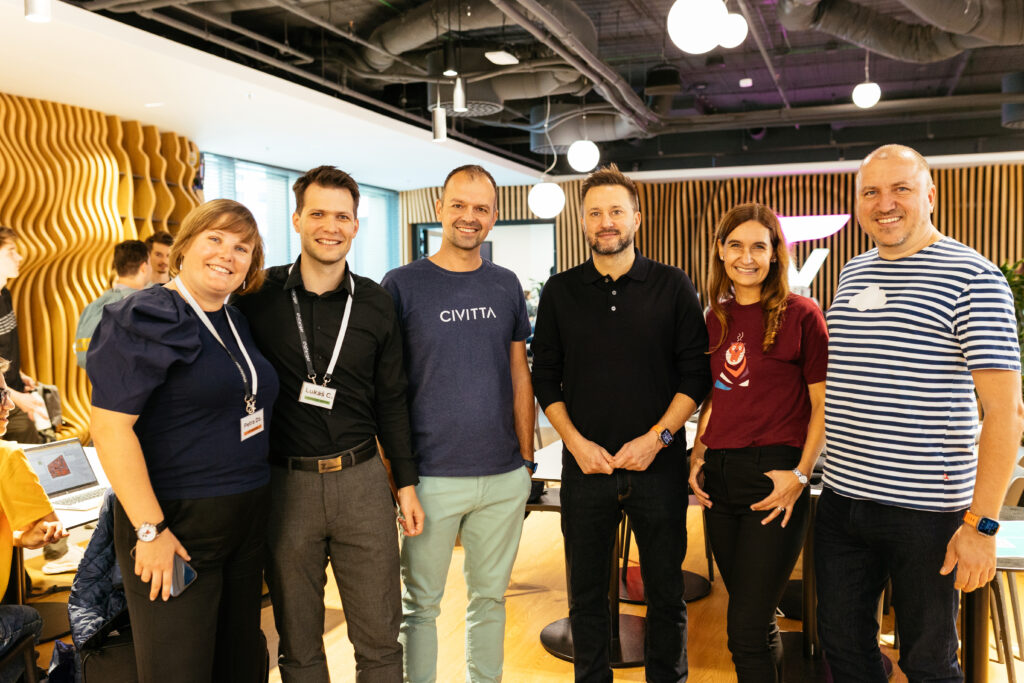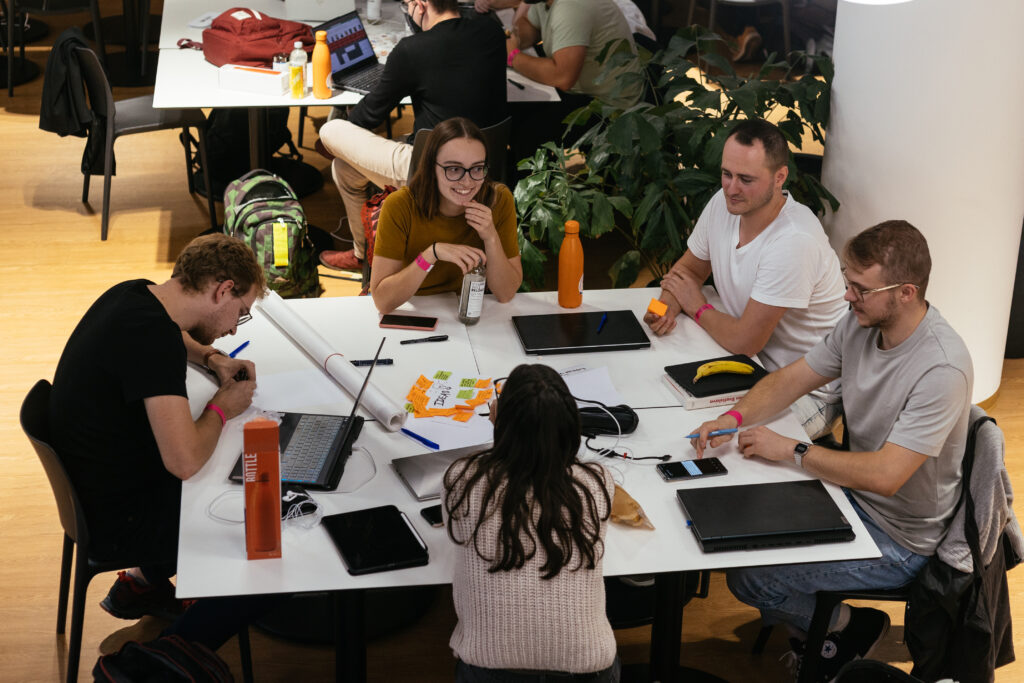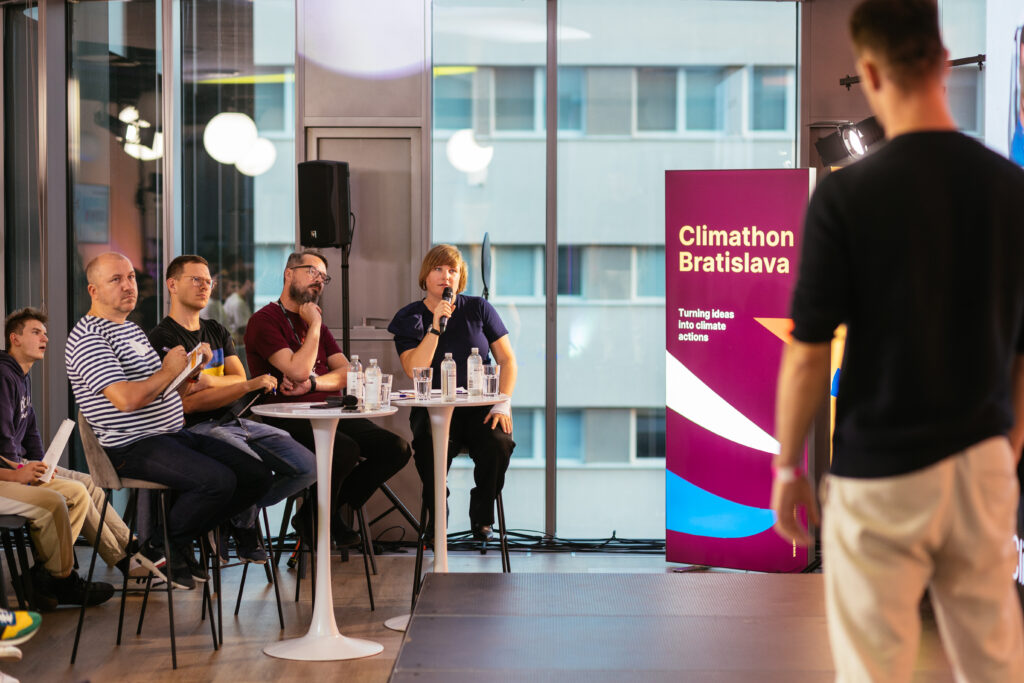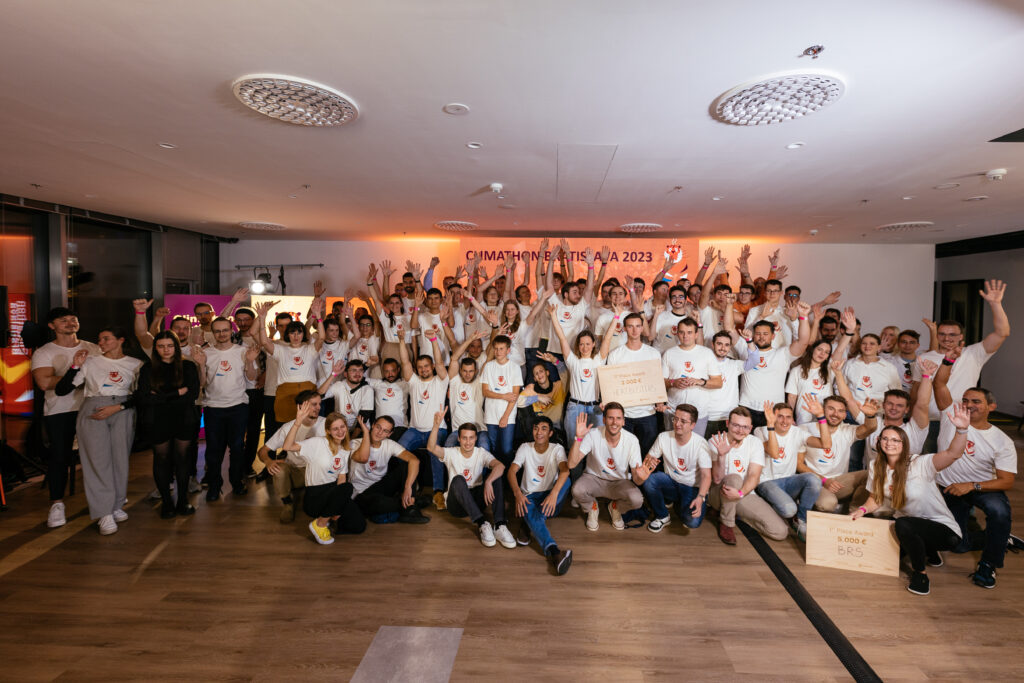Climathon Bratislava
170 participants. 48 hours. 35 ideas.25. – 27. October, The Spot Cowork, Bratislava
What is Climathon?
Together with its citizens, Bratislava is creating solutions to help our city become more resilient to climate change.
Climathon Bratislava is an innovation event during which teams of students and enthusiasts from all over Slovakia create solutions in collaboration with city representatives, experienced mentors and experts. Climathon Bratislava is a part of the global initiative Climathon, which involves more than 140 cities from 56 countries worldwide.
Participants come together for a weekend event to work as teams to find creative and innovative solutions to the challenges of the city of Bratislava and have a chance to win €10,000 worth of prizes!
48 hours to develop and test the solution
Workshops, teamwork and mentor consultations
Presentations and contest for the best solutions
Prizes for the winners worth €10,000
48 hours to develop and test the solution
Workshops, teamwork and mentor consultations
Presentations and contest for the best solutions
Prizes for the winners worth €10,000

Our goal is better Bratislava
The vision of the City of Bratislava is to become a resilient and sustainable city that provides a livable urban space to its citizens. As part of the Climathon, the city is addressing the need for the efficient functioning of the city´s infrastructure and creating services that support the city´s climate resilience. Innovative solutions are based on live city data and valuable data from partners, which can only be accessed during the Climathon.
Our goal is better Bratislava
The vision of the City of Bratislava is to become a resilient and sustainable city that provides a livable urban space to its citizens. As part of the Climathon, the city is addressing the need for the efficient functioning of the city´s infrastructure and creating services that support the city´s climate resilience. Innovative solutions are based on live city data and valuable data from partners, which can only be accessed during the Climathon.

“Bratislava adopted its first Climate Plan (SECAP) this year. We want to strengthen our efforts to mitigate and adapt to climate change, but cooperation with other actors will be essential to achieve the ambitious goals of the plan. The Climathon provides a valuable space for the creation of innovative solutions co-created by the city, active citizens and residents, and responsible businesses.”

Soňa Andrášová,
Urban Strategies and Analyses Unit
“Bratislava adopted its first Climate Plan (SECAP) this year. We want to strengthen our efforts to mitigate and adapt to climate change, but cooperation with other actors will be essential to achieve the ambitious goals of the plan. The Climathon provides a valuable space for the creation of innovative solutions co-created by the city, active citizens and residents, and responsible businesses.”

Soňa Andrášová,
Urban Strategies and Analyses Unit
Theme
The challenge of the second year of Climathon 2021 was to find solutions that would make the City of Bratislava more resilient to climate change.
Participants could focus on various areas such as prediction and visualization of climate stressors (heat islands, floods, etc.), more efficient planning of renewable resources, or optimization of waste management, public transport, and electromobility.
Participants and teams
In the second year, 120 participants joined the challenge, of which 50 joined online, and 70 were present in the modern coworking spaces of HubHub. During the weekend, the teams worked on valuable and innovative solutions, and together they brought 15 projects, of which the jury chose the best three. When creating solutions, the teams had actual data available from the City of Bratislava, Swiss Re, and the companies Solargis, Meteomatics, ZSE, and the city´s company OLO.
Mentors
Experienced mentors guided the participating teams from various fields such as energetics, transportation, technology, and the environment. This year, more than 25 mentors were present, and together with the participants, they created ideas that the teams turned into functional solutions.
City of Bratislava: Ivana Maleš, Eva Streberová, Petra Dzurovnčinová, Martin Vavrek
Swiss Re: Uwe Nagel, Lukáš Csóka, Jakub Ševcech
ZSE: Marek Tomeš, Miroslav Bištuť, Rastislav Žembery,
Other mentors: Guido Oswald, Pavol Magic, Vladimír Klimant, Marek Lavčák, Michal Laco, Martin Veselý, Kai Pham a ďalší
Winning solutions
The winning team KANthon created a solution in the form of a comparator, thanks to which it is possible to evaluate the length of the journey by car compared to public transport between different places in Bratislava. Thanks to the data in the comparator, it is possible to find out which routes are worth taking by public transport and which by car.
Second place went to Ecothusiast, which created a tool capable of identifying the presence of heat islands in different parts of the city based on several factors. The benefit for the city is detecting temperature changes after planting greenery on specific streets.
Third place was awarded to the UnderBranc, who came up with the idea that makes waste collection more efficient. The mobile app allows residents to notify when the trash can is full easily.
Video
Photo
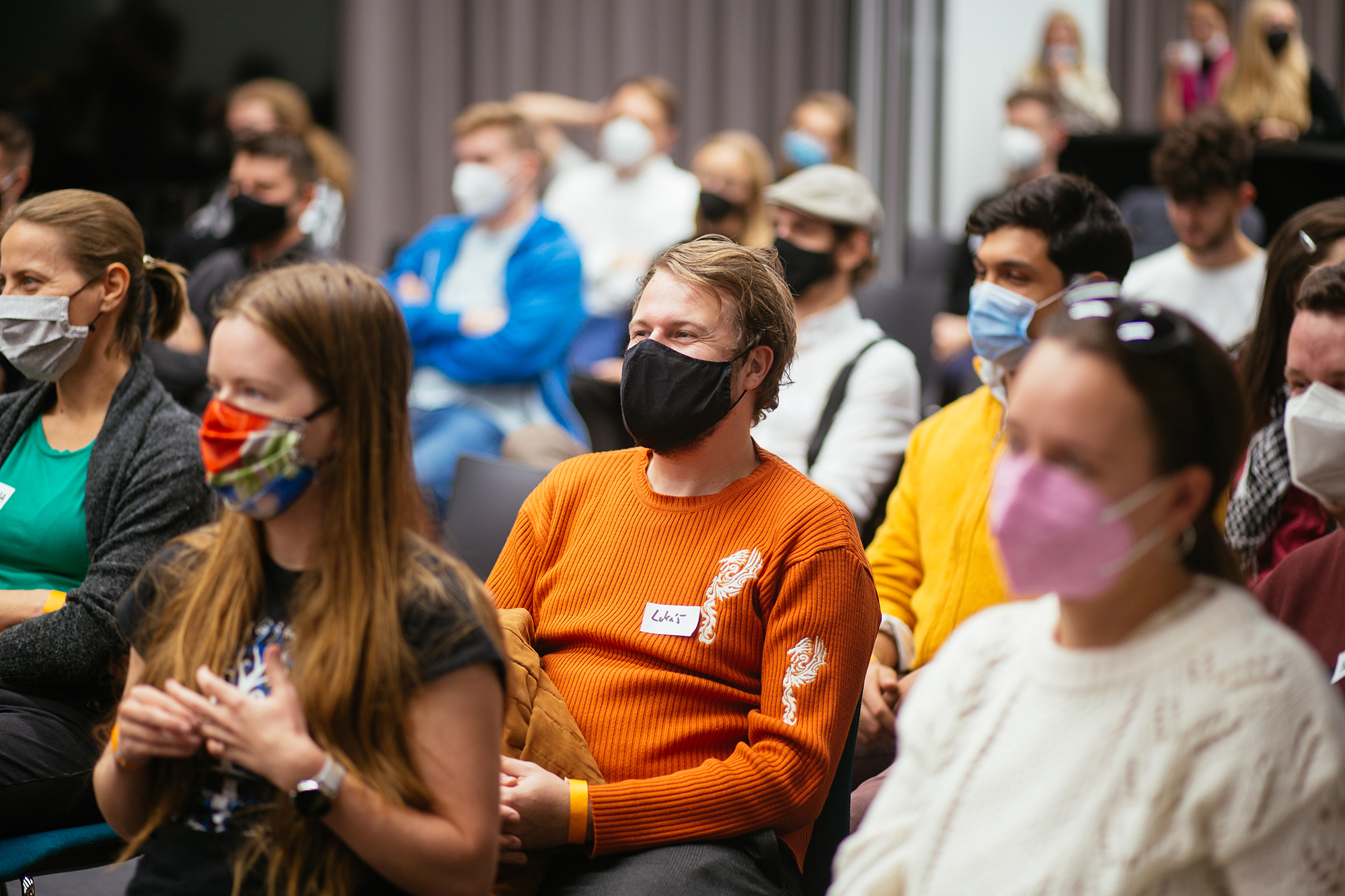



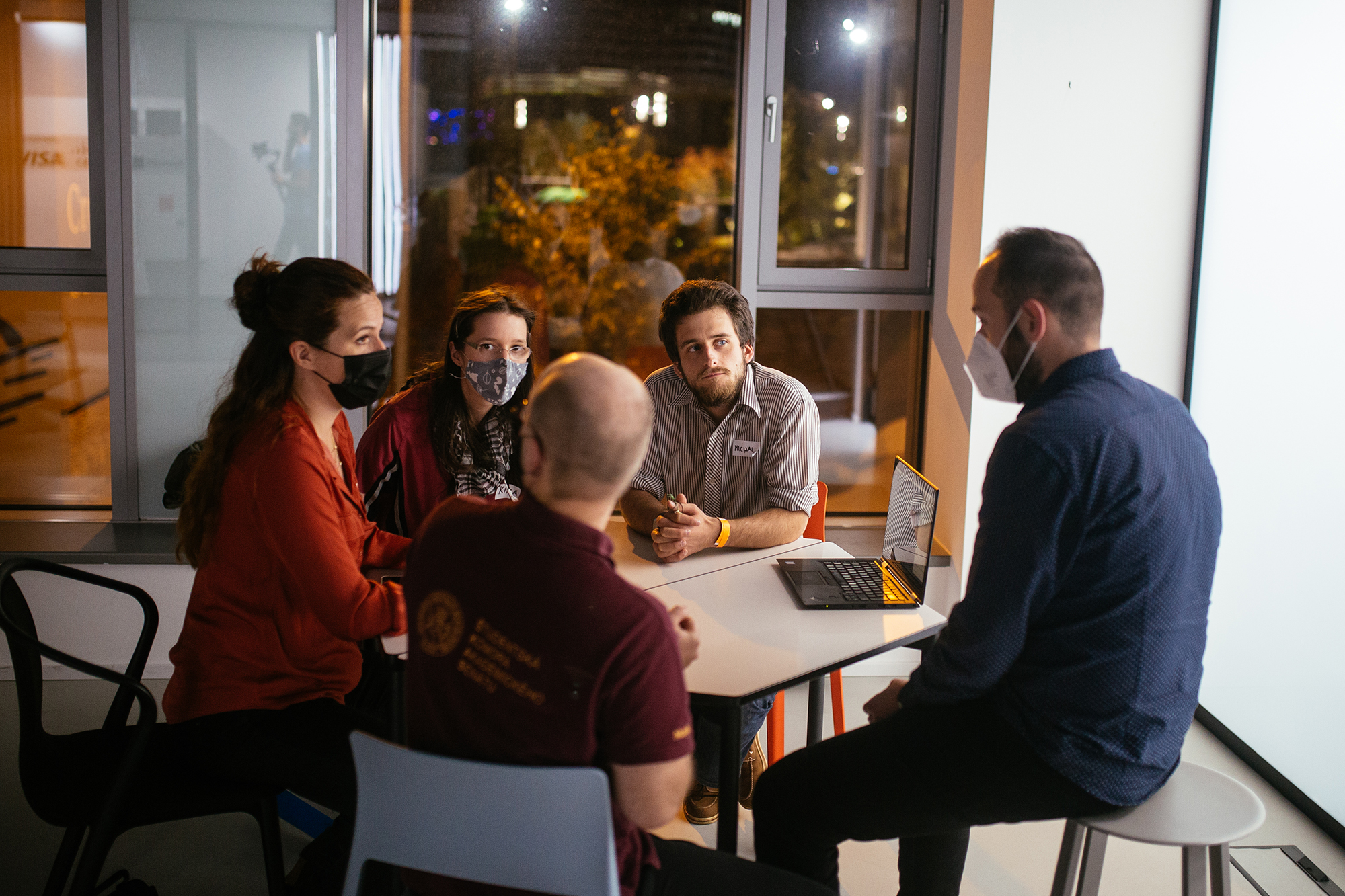
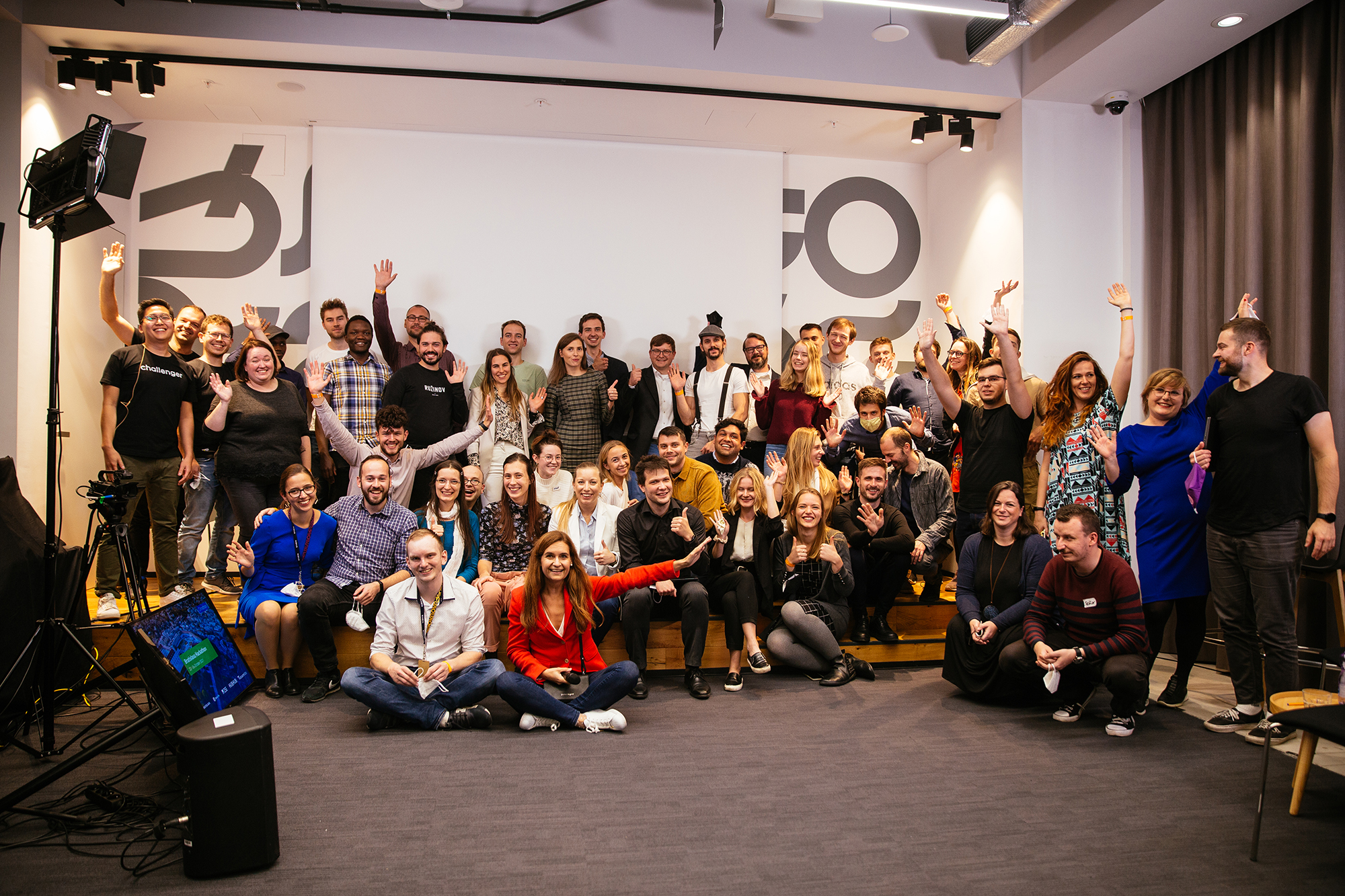
Themes
During the first year of the Climathon, the City of Bratislava defined two challenges that the participants had 48 hours to deal with.
1. How to motivate citizens and involve them in transforming Bratislava into a resistant city to climate change?
2. How to increase the use of urban transport and ecological transport alternatives in the city?
Participants and teams
In the first year, 150 participants from 8 countries participated in the search for solutions, who were divided into teams of 3-7 participants. During this weekend, the participants came up with 25 resulting projects, the best of which were piloted and tested in the city.
Mentors
While working on technological solutions, the teams had at their disposal 26 experienced mentors from various fields, including data analytics, transportation, the energetics sector, and climatology. Thanks to their expertise and experience in the area, they were able to help the participants create feasible and viable projects.
City of Bratislava: Headliner: Eduar Donauer, Milota Sidorová, Pavol Škápik, Tomáš Peciar, Petra Dzurovčinová
Swiss Re: Headliner: Lukáš Csóka, Uwe Nagel, Alicia Montoya, Jakub Ševcech
Other mentors: Vladimír Klimant, Matej Gálik, Adrián Gubčo, Pavol Magic, Pavol Vančo, Andrej Garaj, Kristína Korčeková, Marcel Klimo, Ján Búza, Heliodor Macko
Winning solutions
Holandská spojka is the winning idea that offers cities and residents data on overheating individual city locations. Along with this solution, the Holandská spojka provides specific ways that the municipality can prevent overheating (expansion of greenery). In the application, it is possible to see what effects the recommendations will have on the temperature in the given location.
The winning project of the student category – Swiss Re Students, came up with the idea that thanks to machine learning help to predict city traffic delays and increases the reliability of the arrival of public transport vehicles on time. By using data on the hold of connections from previous months, the system can reduce this time in peak traffic by up to 47%. This service should be integrated into the standard mobile application of the transport company.
Other award-winning solutions:
Main Category
Clima-x is a crowdfunding platform where you can round up the amount for your purchase and use it to support green city projects.
Student category
The City Intelligence Lab team’s project offers an idea in the form of an app for cyclists and pedestrians that can calculate their route to avoid possible rain. This idea has great potential in Bratislava because it rains almost 30% of the days a year.
Geo-Idea Special Prize
It acquired the GOOD solution offering an analytics website that integrates and evaluates data from green urban areas and models their impact on air pollution. It can help the Magistrate of the capital city make better decisions.
Video
Photo
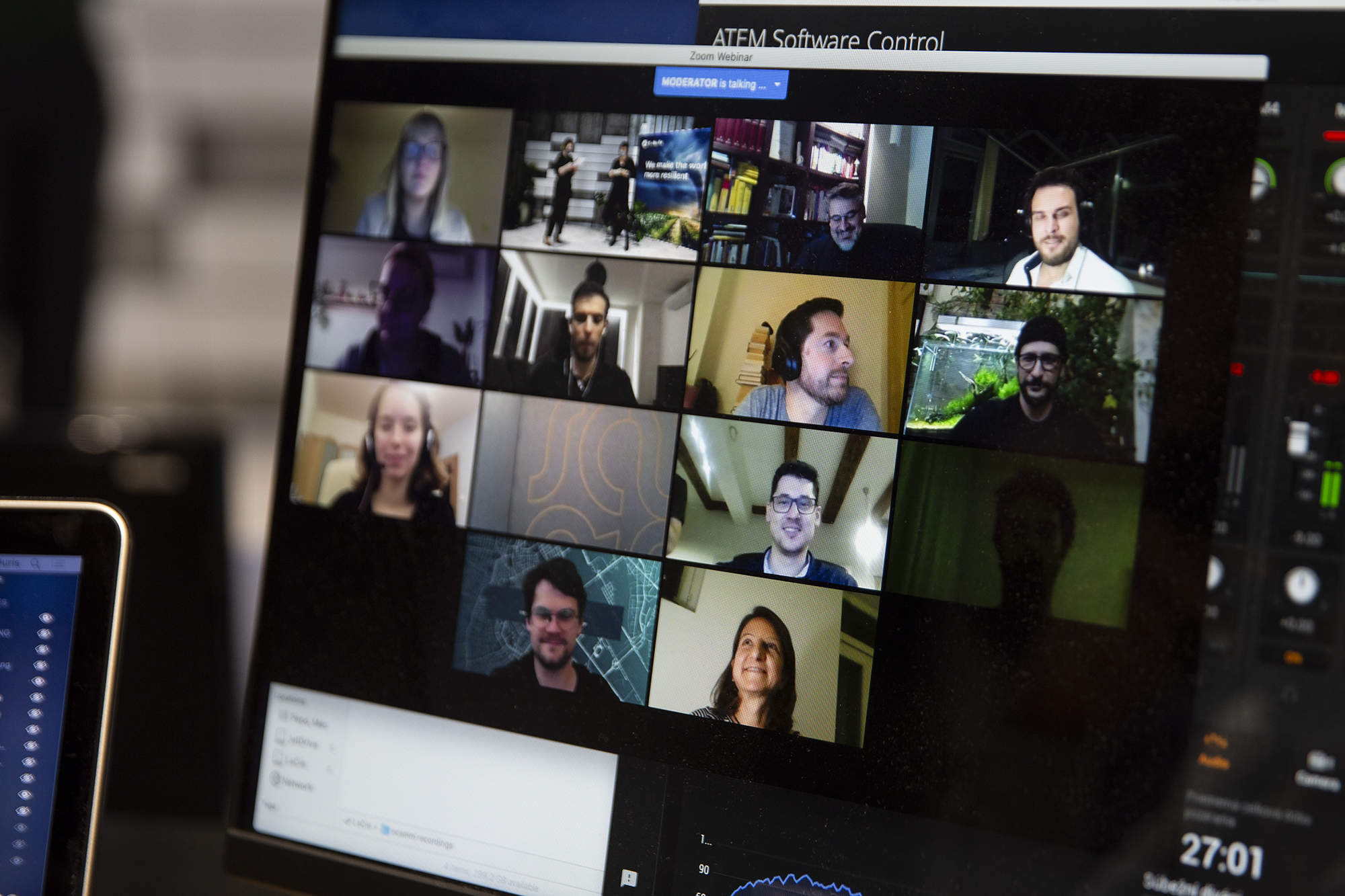
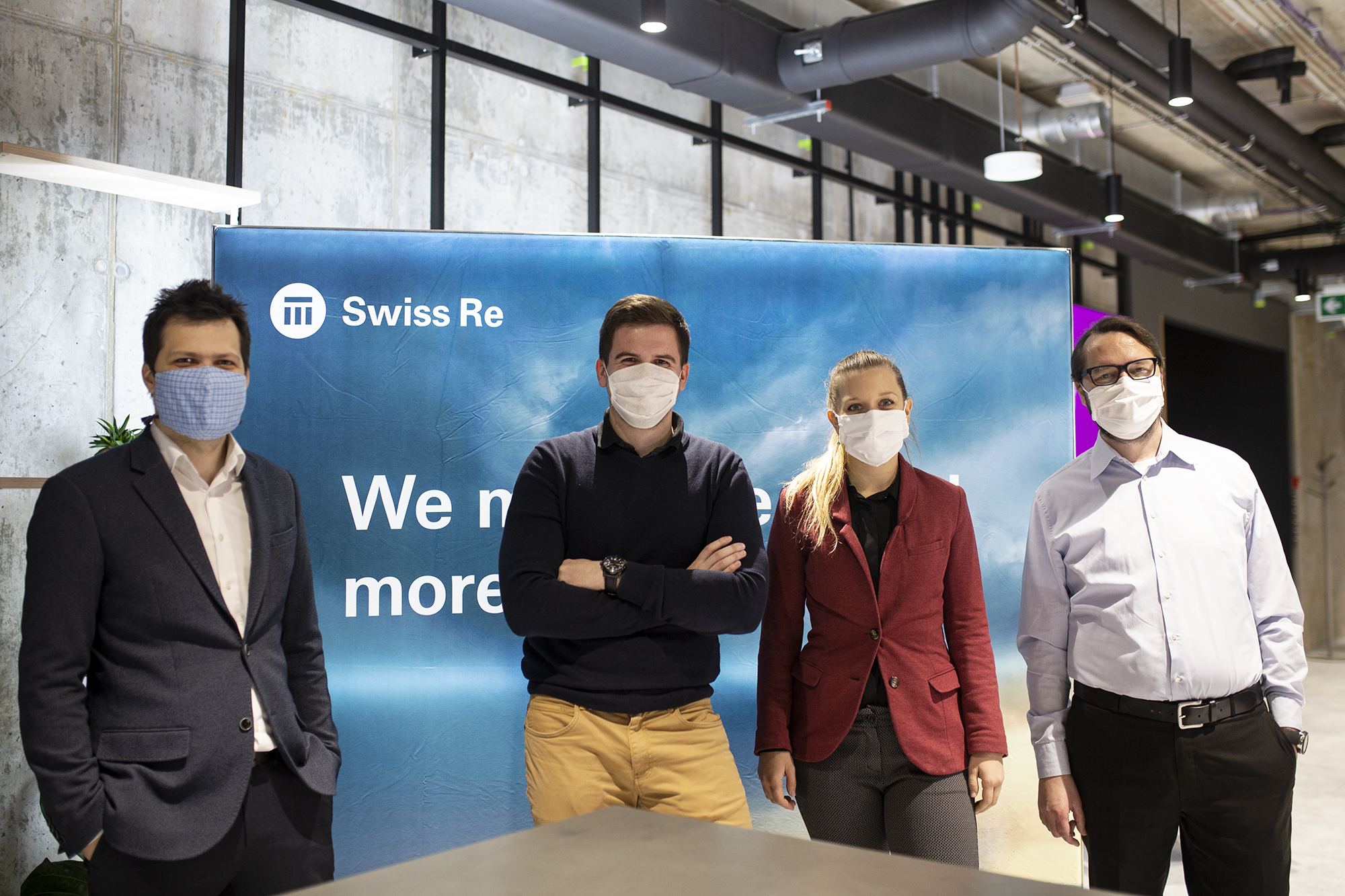
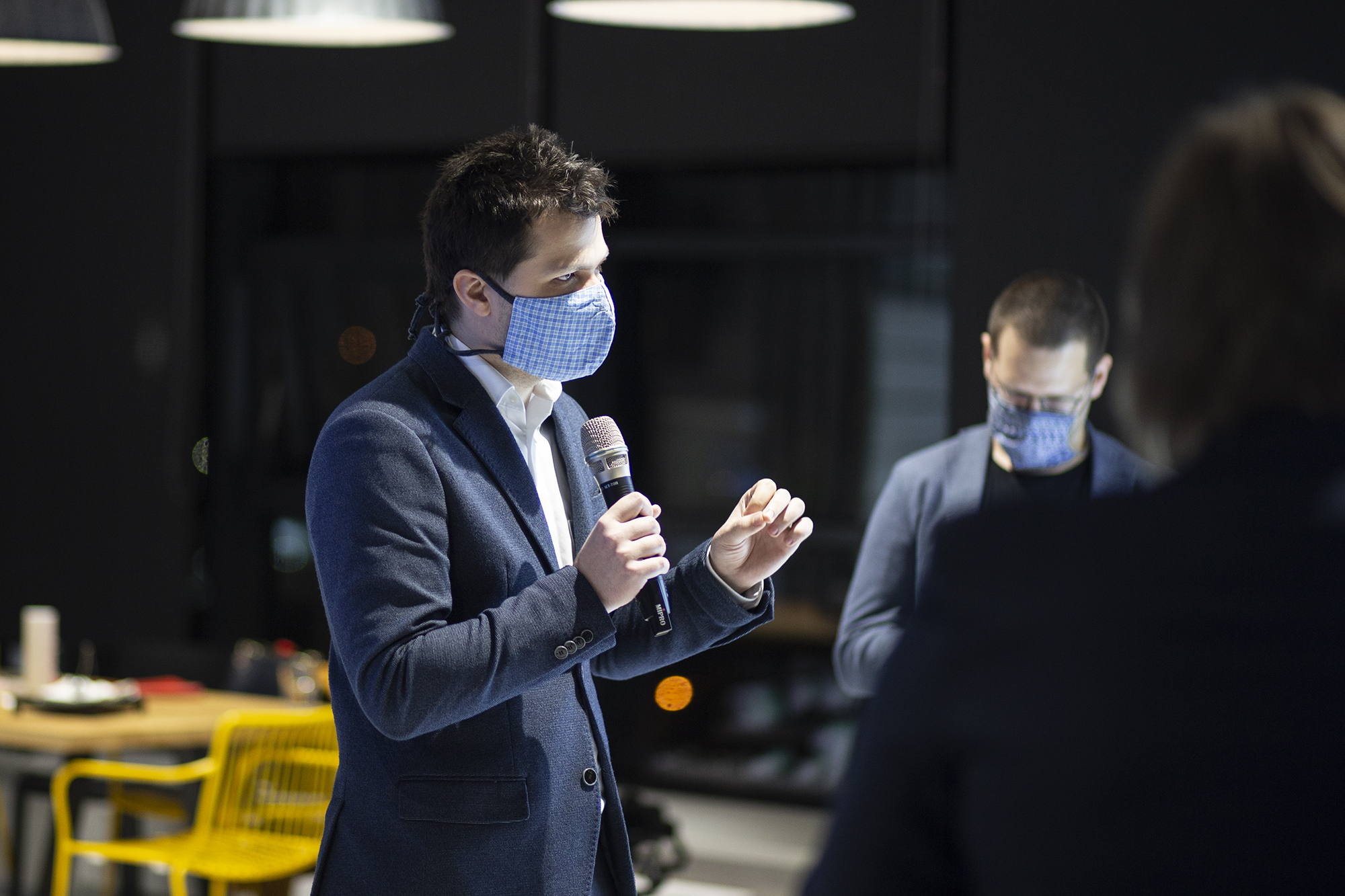


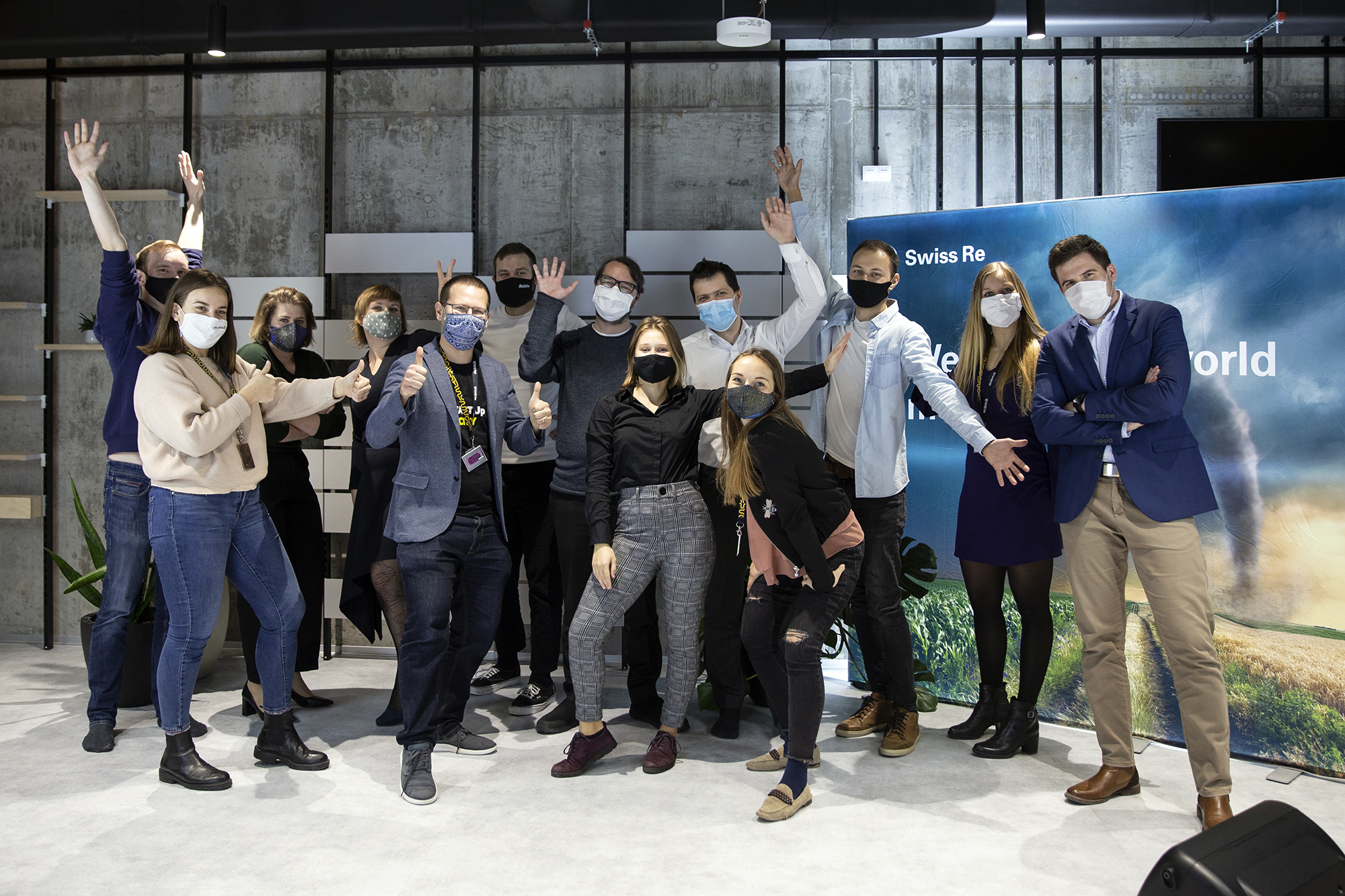
Theme
Team from the third year of Climathon Bratislava created innovative technological solutions that improve life in the city and mitigate the impact of climate change.
The participants had three challenges to choose from: how can the city optimize its services in case of extreme weather and climate events, how the city can be better prepared for expected long-term impacts of climate change, and also how citizens can help the city combat climate change.
Participants and teams
200 attendees took part in Climathon 2022, participants formed 29 teams in total. The teams worked for 48 hours in the modern coworking space of the Hub-Hub. At the end of the weekend, 23 solutions were prepared, from which the expert jury awarded the best 3. Climathon participants had exclusive access to data from the IBL Software Engineering company, which they could use and thus ensure greater relevance of their solutions.
Winning solutions
The winning team Acropolis came up with an idea how to optimize and improve the city’s response to extreme weather fluctuations such as heavy rains or floods.
Second place was taken by a group of innovators called Dapper, who offered a solution to optimize road maintenance using critical infrastructure identification.
Third place went to the Drevokocúr team, which presented a solution to make public transport more efficient thanks to the identification of routes that people use most often.
Mentors
During the weekend, teams had at their disposal more than 30 mentors, with whom they consulted their progress and solutions. The mentors passed on valuable experience and knowledge to the participants in the areas of data analytics, transport, innovation, digital services, and climate and environment.
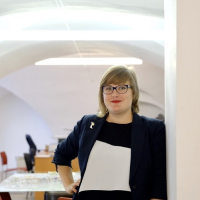
CHIEF INNOVATION OFFICER IN THE CITY OF BRATISLAVA
Petra Dzurovčinová

ENVIRONMENT SPECIALIST AT THE METROPOLITAN INSTITUTE OF BRATISLAVA
Eva Čulová

CIRCULAR ECONOMY EXPERT AT BRATISLAVA
Ivana Maleš

CHIEF TECHNOLOGY OFFICER AT BRATISLAVA
Martin Vavrek

SENIOR SCRUM MASTER AT SWISS RE
Matej Gálik

HEAD OF DATA FOUNDATIONS AT SWISS RE
Lukáš Csóka

DATA SCIENTIST AT SWISS RE
Jakub Ševcech

DIGITAL PRODUCT MANAGER AT BRATISLAVA
Mária Kostická

ASSOCIATE PARTNER AND INNOVATION EXPERT AT CIVITTA
Michal Laco

DIGITAL SERVICES EXPERT AT BRATISLAVA
Martina Mihalkovičová
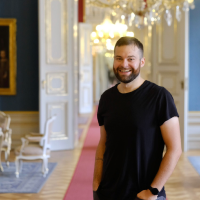
DIGITAL SERVICES EXPERT AT BRATISLAVA
Slavo Oslej

ARCHITECT AND BACK-END DEVELOPER AT BRATISLAVA
Lukáš Polesňák

DIGITAL SERVICES EXPERT AT BRATISLAVA
Zuzana Sidorová

BUSINESS DESIGNER AT THE OFFICE OF THE CHIEF INNOVATION OFFICER SR
Lucia Ciranova

DIGITAL SERVICES EXPERT AT BRATISLAVA
Jakub Hrubý

CO-FOUNDER AT KLÍMA ŤA POTREBUJE
Jakub Hrbáň

ARCHITECT AND BACK-END DEVELOPER AT BRATISLAVA
Martin Pinter

PROJECT MANAGER AT CIVITTA
Martin Veselý

PROJECT MANAGER FOR GREEN ECONOMY
Kristína Korčeková

GEOICT & ENVIRONMENTAL INFRASTRUCTURE COORDINATOR AT MINISTRY OF ENVIRONMENT
Martin Tuchyňa

INNOVATION CONSULTANT
Baška Klimek

MACHINE LEARNING AT METEOPRESS
Matej Choma

HEAD OF IT OPS AT BRATISLAVA
Rudolf Grujbár
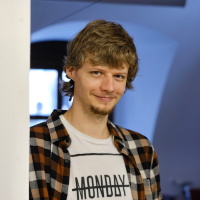
DEVELOPER AT BRATISLAVA
Adam Grund

DIGITAL SERVICES EXPERT AT BRATISLAVA
Sabina Hrabinová

ENVIRONMENT SPECIALIST AT THE METROPOLITAN INSTITUTE OF BRATISLAVA
Jana Božanová

INNOVATION CONSULTANT AT CIVITTA
Anna Pastoreková

CO-FOUNDER & PARTNER CIRCULAR ECONOMY TRANSITION AT MISSIONC
Andrea Orsag

ASSISTANT PROFESSOR AT PREŠOVSKÁ UNIVERZITA
Miloslav Michalko

CHIEF EXECUTIVE OFFICER & OWNER OF IBL SOFTWARE ENGINEERING
Michal Weis

CHIEF TECHNOLOGY OFFICER AT IBL SOFTWARE ENGINEERING
Jozef Matula

GIS ANALYST AND URBAN PLANNER AT METROPOLITAN INSTITUTE OF BRATISLAVA
Martin Jancovic

ROAD MAINTANANCE AT BRATISLAVA
Michal Lisinovič

HEAD OF STRATEGY AND PROJECTS DEPARTMENT AT BRATISLAVA
Viera Sláviková

CLIMATE POLICY AT BRATISLAVA
Adela Syslová
Video
Photo
Challenges
- How can we make Bratislava and its citizens more resilient to extreme weather events?
- How can we increase participation and engagement of residents in sustainable development of the city using digital tools such as Bratislava ID?
- Open challenge: How can we as citizens help the city become more sustainable and combat climate change?
Mentors

Petra Dzurovčinová
CHIEF INNOVATION OFFICER IN THE CITY OF BRATISLAVA

Eva Čulová
ENVIRONMENT SPECIALIST AT THE METROPOLITAN INSTITUTE OF BRATISLAVA

Soňa Andrášová
CLIMATE SPECIALIST AT BRATISLAVA

Martin Vavrek
CHIEF TECHNOLOGY OFFICER AT BRATISLAVA

Matej Gálik
SENIOR SCRUM MASTER AT SWISS RE

Slavo Oslej
DIGITAL SERVICES EXPERT AT BRATISLAVA

Martin Pinter
ARCHITECT AND BACK-END DEVELOPER AT BRATISLAVA

Lukáš Polesňák
ARCHITECT AND BACK-END DEVELOPER AT BRATISLAVA

Zuzana Sidorová
DIGITAL SERVICES EXPERT AT BRATISLAVA

Lucia Ciranova
BUSINESS DESIGNER AT THE OFFICE OF THE CHIEF INNOVATION OFFICER SR

Jakub Hrubý
DIGITAL SERVICES EXPERT AT BRATISLAVA

Jakub Hrbáň
CO-FOUNDER AT KLÍMA ŤA POTREBUJE

Baška Klimek
INNOVATION CONSULTANT

Michal Brath
SOFTWARE ENGINEER&PROGRAMMER AT IBL

Martin Veselý
PROJECT MANAGER AT CIVITTA

Kristína Korčeková
PROJECT MANAGER FOR GREEN ECONOMY

Uwe Nagel
IT AND DATA SCIENCE AT SWISS RE

Rudolf Grujbár
HEAD OF IT OPS AT BRATISLAVA

Sabina Hrabinová
DIGITAL SERVICES EXPERT AT BRATISLAVA

Adam Grund
DEVELOPER AT BRATISLAVA

Ladislav Kizak
CHIEF PRODUCTION OFFICER & BOARD MEMBER AT BRATISLAVSKÁ VODÁRENSKÁ SPOLOČNOSŤ

Juraj Haluška
HEAD OF MEASUREMENT & WATER MANAGEMENT DIVISION AT BRATISLAVSKÁ VODÁRENSKÁ SPOLOČNOSŤ

Martin Blaha
CRISIS MANAGER AT BRATISLAVA

Matúš Letko
CHIEF SALES OFFICER & BOARD MEMBER AT BRATISLAVSKÁ VODÁRENSKÁ SPOLOČNOSŤ

Jozef Matula
CHIEF TECHNOLOGY OFFICER AT IBL SOFTWARE ENGINEERING

Martin Jancovic
GIS ANALYST AND URBAN PLANNER AT METROPOLITAN INSTITUTE OF BRATISLAVA

Michal Lisinovič
ROAD MAINTANANCE AT BRATISLAVA
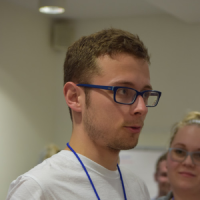
Ľuboš Rybnikár
GEOGRAPHIC INFORMATION SYSTEM SPECIALIST AT METROPOLITNÝ INŠTITÚT BRATISLAVY

Michal Weis
CHIEF EXECUTIVE OFFICER & OWNER OF IBL SOFTWARE ENGINEERING

Adela Syslová
CLIMATE POLICY AT BRATISLAVA

Marian Zachar
ESG SPECIALIST

Juraj Vilem
SUSTAINABILITY MANAGER AT SLOVENSKÁ SPORITEĽŇA

Viera Sláviková
SUSTAINABILITY PROJECT EXPERT
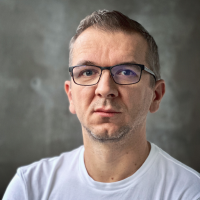
Marián Rohál
HEAD OF THE ANALYSIS AND GIS UNIT AT METROPOLITNÝ INŠTITÚT BRATISLAVY

Martina Mihalkovičová
DIGITAL SERVICES EXPERT AT BRATISLAVA

Tomas Pohl
HEAD BIG DATA FOUNDATIONS AT SWISS RE
Video
What is happening after Climathon Bratislava?
Winning project
Creating pilot versions and testing
Incorporation of comments
Creating services and its implementation
Join us for the upcoming Climathon
Sign up and help Bratislava with your ideas to become more resilient to climate change.
Join us for the upcoming Climathon
Sign up and help Bratislava with your ideas to become more resilient to climate change.
Organisers
Main partners
Partners
Supporters
Media partner
Product partners
Community partners
FAQs
What is Hackathon?
A hackathon is a 48-hour event where participants from different industries come together to work in small teams on creative and innovative projects, usually in the fields of technology and software development. Teams have limited time to build a project from the ground up or develop new features for existing solutions.
The goal is to work together to create practical solutions to real-world challenges defined by the City of Bratislava and partners. During the event, teams validate their ideas with expert mentors who guide and inspire them with their input. At the end of the event, the teams present their projects and solutions. The best solutions, selected by an expert jury, receive financial or material prizes and the opportunity to further collaborate on the development of their ideas. Hackathons are held in various sectors, not only
in the technology industry. They are a fun opportunity for collaboration, learning, networking and fostering innovation.
Who can register?
Participants of all academic and professional backgrounds are welcome. Project managers, IT specialists, data scientists, marketing experts, entrepreneurs, innovators, and students who are interested in technology and the green environment.
We highly recommend you to form a team (2-5 people) prior to the Climathon. Each team member needs to register separately, under the same team name. It is advised to have a diverse team
What if I don’t have a team?
You can still register as a solo hacker and we will try our best to match you with other solo hackers who are looking for a team.
On October 11, 2023 at 18:00, a Kick off event will be held for Climathon participants and interested individuals. At this short event, you will get a unique opportunity to learn more about the Climathon challenges directly from the experts, get recommendations or inspiration for the direction of your
solutions and ask your additional questions. At the same time, you will have the opportunity to meet other “hackers” and build or expand your team for the event.
When is the deadline for registration?
You can register for Climathon as a team until October 18, 2023 or until the capacity is full.
For individuals without a team, the deadline to register is a day before the Kick off event on October 10, 2023. On the Kick off event on October 11, 2023 all individuals will be able to form a team.
What is Kick-off event?
A kick-off event is the initial gathering that officially marks the beginning of the hackathon and prepares participants for the upcoming days. It typically takes place a day or evening before the actual hackathon starts. Its purpose is to introduce participants to the hackathon atmosphere. It will provide them with important information and instructions, allow them to get to know the other participants and also form the competing teams. Participation in Kick-off is not mandatory, but it is highly recommended.
Where is the venue?
Climathon Bratislava will take place in The Spot cowork, which is situated in the Sky Park.
Address: Bottova 2/A, 811 09 Bratislava
Where can I find a schedule?
Detailed schedule will be published on this website soon.
What are the prizes for the winning teams?
Each participant will receive a merch at the beginning. Winning teams can look forward to cash prizes worth € 10 000 and material prizes from our partners.
What happens after Climathon?
After Climathon, the winning teams will have an opportunity to co-develop and implement the solutions with the cooperation of the city of Bratislava.
What should I bring?
You will need a laptop for your hacking. If you wish to bring any additional hardware (monitor, etc) you are more than welcome. Food will be provided on the premises (3 meals per day, drinks and snacks). Should you have any questions about what to bring, do not hesitate to contact us.
Where will I sleep?
The Climathon organisers are giving you the opportunity to stay overnight right at The Spot. One room will be reserved for this purpose. However, you will need a mattress and a sleeping bag. If you want to sleep comfortably, feel free to find accommodation nearby.
Does this cost money?
Thanks to our partners, Climathon is free of charge for registered participants.
What is the official language of Climathon?
All official parts of the program will be in English, as well as the final presentations of the solutions that will be presented to the jury.
You can communicate in teams in any language. You will be able to communicate with mentors in both languages, Slovak and English.
